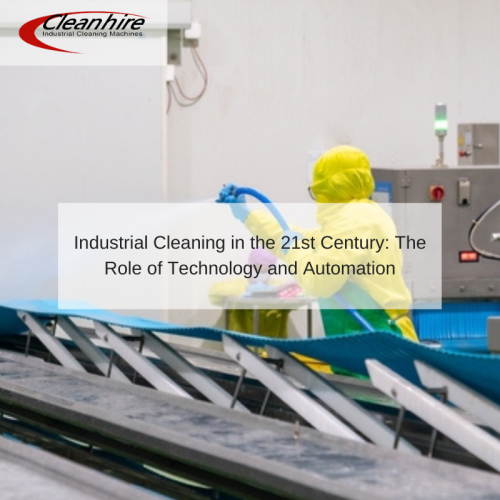Industrial cleaning is a critical aspect of maintaining high hygiene and safety standards in manufacturing plants, food processing facilities, and healthcare institutions. In recent years, there has been a significant shift towards using technology and automation in industrial cleaning processes. But what is the role of these two in industrial cleaning? Read on!
The Benefits of Using Technology and Automation in Industrial Cleaning
Industrial cleaning has come a long way from its traditional manual methods. With advancements in technology and automation, industrial cleaning processes have become more efficient, cost-effective, and safer.
Enhanced Safety
In the past, industrial cleaning involved a labour-intensive and time-consuming process that relied on human effort to clean equipment and surfaces. The process was often hazardous, involving harsh chemicals and hot water, and significantly risked workers’ safety.
With the use of technology, autonomous systems can be deployed to clean surfaces and equipment without exposing workers to hazardous conditions. By reducing human involvement in cleaning processes, accidents and injuries can be minimised, leading to a safer working environment.
Cost-Effective
Traditional cleaning methods were costly and required considerable time and resources to achieve the desired level of cleanliness. Today, autonomous cleaning robots have been developed to clean surfaces and floors, reducing the need for human effort. These systems reduce the cleaning time, enhance efficiency, and are cost-effective.
Improved Efficiency
Another key benefit of technology and automation in industrial cleaning is improved efficiency. Automation systems and robots can perform cleaning tasks faster and more accurately than humans, reducing cleaning times and increasing productivity. This results in cost savings for companies by reducing labour costs and increasing production capacity.
Environmental Friendliness
Technology and automation in industrial cleaning have made the process more environmentally friendly. Traditional cleaning methods produce a considerable amount of wastewater and hazardous waste that pose significant environmental concerns. However, with advanced cleaning systems and robots, the amount of wastewater and hazardous waste produced can be significantly reduced.
Conclusion
As you can see, using technology and automation in industrial cleaning processes has transformed the industry, leading to increased efficiency, improved safety, and reduced costs. The benefits are clear, and companies that leverage these technologies stand to gain a significant advantage over their competitors. It is evident that the future of industrial cleaning lies in technology and automation, and companies must embrace these changes to stay ahead.
